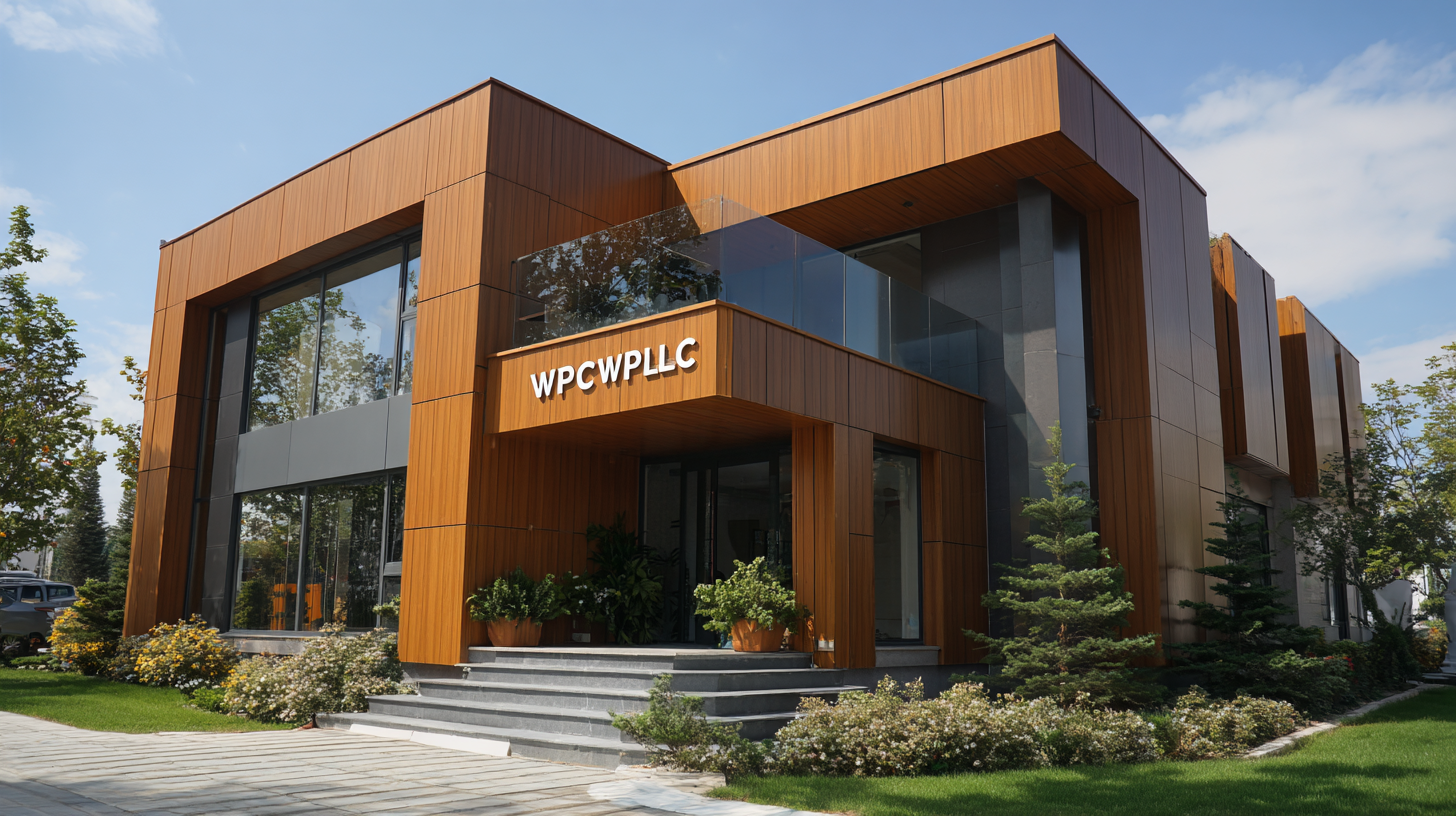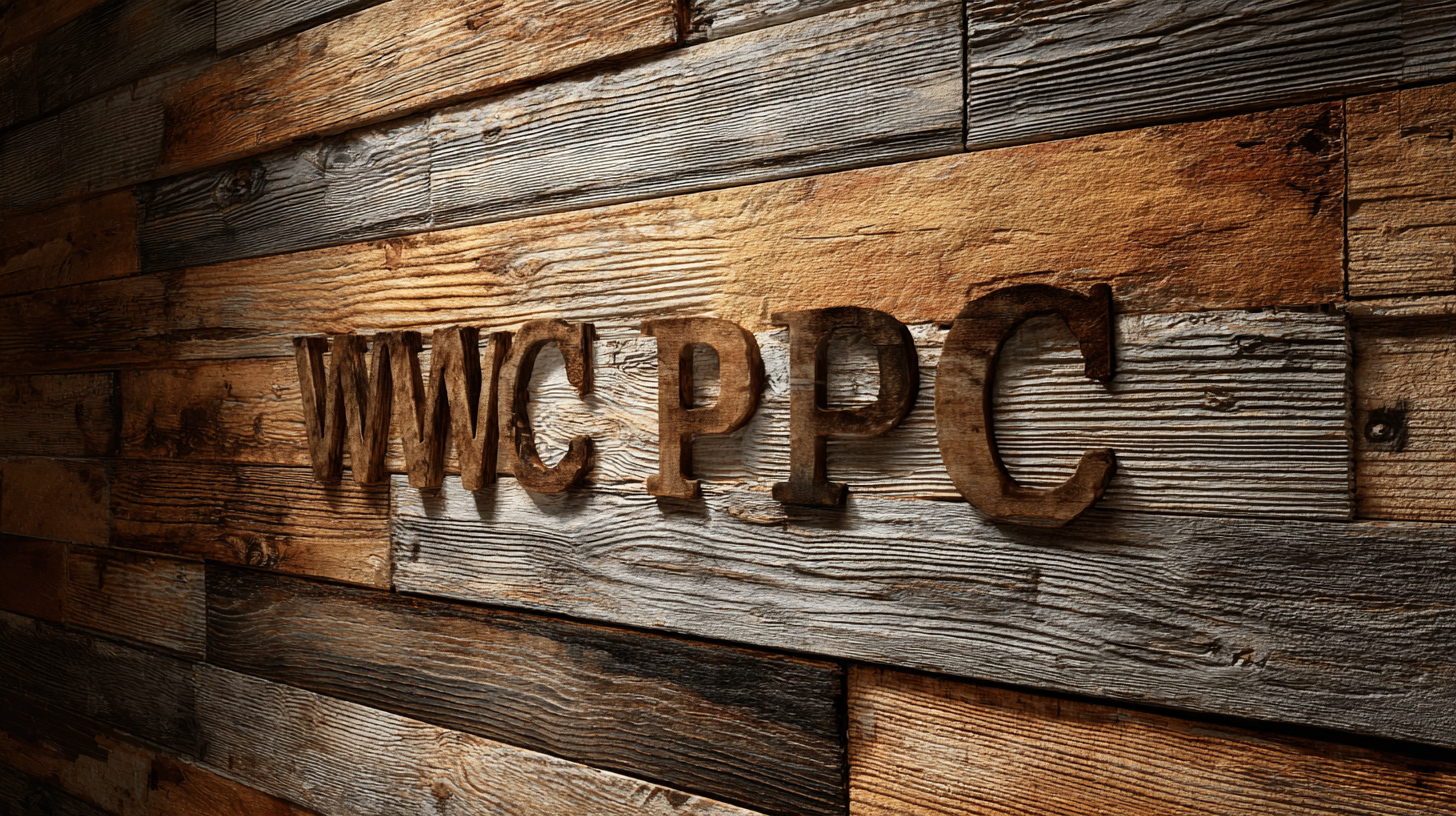
In the ever-evolving landscape of sustainable construction, WPC wall panels are emerging as a frontrunner in innovative building materials. Wood Plastic Composites (WPC) offer a unique blend of sustainability and durability, making them an ideal choice for eco-friendly architecture. According to a report by Research and Markets, the global wood-plastic composites market is projected to reach $10.6 billion by 2027, growing at a CAGR of 11.1% from 2020. This growth is driven by the increasing demand for green building materials that reduce environmental impact while providing superior performance. As more architects and builders recognize the importance of sustainable practices, WPC wall panels are being adopted not only for their aesthetic appeal but also for their low maintenance and recyclability. Exploring the innovations behind these materials is essential for understanding how WPC wall panels can contribute to a more sustainable built environment.

Wood-Plastic Composite (WPC) wall panels have emerged as a revolutionary solution in the realm of sustainable construction. By combining recycled wood fibers with thermoplastics, WPC offers an eco-friendly alternative that not only reduces waste but also promotes the efficient use of resources.
These panels deliver the aesthetic appeal of traditional wood while mitigating the environmental impact associated with deforestation and plastic waste.
One of the key advantages of WPC wall panels is their durability and low maintenance requirements. Unlike traditional materials, WPC is resistant to moisture, insects, and decay, making it an ideal choice for various climates and settings. Additionally, their ease of installation contributes to faster construction times, offering builders and homeowners alike a reliable option that aligns with modern sustainability goals. As the construction industry seeks to minimize its carbon footprint, WPC wall panels stand out as a versatile and practical choice for those committed to sustainable building practices.

The manufacturing excellence behind world-class WPC (Wood-Plastic Composite) wall panels is a testament to the innovative approaches that prioritize sustainability in construction. WPC products are recognized for their durability, low maintenance needs, and resistance to moisture and insects, making them ideal for a variety of building applications. According to market research, the global WPC market is projected to reach approximately USD 10 billion by 2027, expanding at a CAGR of 12.1% from 2020 to 2027. This growth is driven by an increasing emphasis on sustainable building materials that reduce carbon footprints and promote eco-friendly practices.
The production of WPC wall panels integrates advanced manufacturing techniques that optimize resource efficiency and minimize waste. By using a combination of recycled wood fibers and plastic, manufacturers can create high-performing materials with a significantly lower environmental impact than traditional options. Studies indicate that the energy required to produce WPC products is up to 65% less than that for regular wood alternatives. This innovative blend not only provides aesthetic versatility but also supports the global shift towards greener construction solutions, further enhancing the appeal of WPC in both residential and commercial projects.
China plays a pivotal role in shaping the global WPC (Wood-Plastic Composite) market, especially in the context of sustainable construction. As one of the largest producers of WPC materials, China’s advancements in technology and manufacturing processes have set a benchmark for quality and innovation. This country not only provides a significant share of WPC products but also drives trends and standards that influence markets worldwide. The increased focus on eco-friendly building materials aligns seamlessly with global sustainability goals, making Chinese WPC a crucial player in reducing construction's environmental impact.
**Tips:** When considering WPC wall panels for your construction projects, look for products that boast high durability and low maintenance requirements. Additionally, check for certifications that indicate compliance with international environmental standards. Incorporating WPC materials not only enhances the aesthetics of your projects but also contributes to a greener future.
Furthermore, as China continues to innovate, potential buyers should stay informed about the latest trends in WPC technology. Understanding these innovations will help stakeholders make informed decisions, ensuring that their construction practices are both sustainable and economically viable. Embracing these advancements can enhance project efficiency and sustainability.
| Dimension | Description | Value |
|---|---|---|
| Material Composition | Percentage of Wood and Plastic | 60% Wood Fiber, 40% Plastic |
| Recyclability | Potential for Recycling | 100% Recyclable |
| Durability | Longevity and Resistance | 30+ Years |
| Maintenance | Ease of cleaning and upkeep | Low Maintenance |
| Thermal Insulation | Energy Efficiency Rating | R-value of 3.5 |
| Fire Resistance | Fire Safety Rating | Class B |
| Market Growth Rate | Expected Annual Growth | 12% CAGR |
| Export Volume | WPC Wall Panels Exported from China | 2 Million Tonnes Annually |
The production of Wood-Plastic Composite (WPC) wall panels is experiencing significant innovations that enhance sustainability and efficiency in the construction industry. One of the key advancements is the development of eco-friendly manufacturing processes that utilize recycled materials. By incorporating recycled wood and plastic into the production line, manufacturers are not only reducing waste but also lowering the carbon footprint associated with traditional building materials. This integration of green technology ensures that WPC wall panels contribute positively to both environmental conservation and resource management.
Another critical innovation is the implementation of smart manufacturing techniques, such as automation and precision engineering. These methods streamline the production process, resulting in lower energy consumption and reduced operational costs. Enhanced techniques, like 3D printing and advanced molding processes, allow for precise customization of wall panels, catering to a variety of architectural designs while minimizing material wastage. As a result, builders and architects are empowered with versatile options that meet both aesthetic and functional needs, enabling a more sustainable approach to construction.
This chart illustrates the key innovations in the production of WPC wall panels and their impact on efficiency in sustainable construction.
WPC (Wood Plastic Composite) wall panels are gaining acclaim in the sustainable construction industry due to their numerous eco-friendly benefits. According to a report by Research and Markets, the global WPC market is projected to grow at a CAGR of 12.5% from 2021 to 2026, driven by increasing demand for sustainable building materials. These panels are made from recycled wood fiber and plastic, effectively diverting waste from landfills while offering an alternative to traditional building materials, which often contribute to deforestation and high carbon emissions.

The thermal insulation properties of WPC wall panels further enhance their sustainability credentials. A study published in the Journal of Cleaner Production found that WPC materials can significantly reduce energy consumption in buildings by improving insulation performance. With a lower thermal conductivity compared to conventional materials, these panels help maintain comfortable indoor temperatures, thereby reducing the need for heating and cooling systems.
Additionally, their durability and resistance to weathering minimize maintenance needs over the lifespan of the building, leading to further resource conservation. This innovative approach in construction not only supports environmental sustainability but also promotes long-term economic efficiency.
